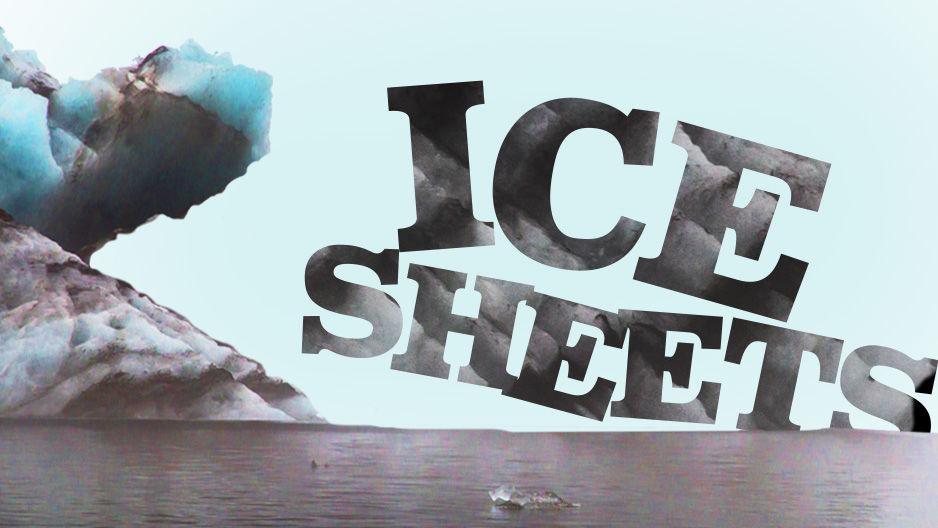Do melting ice sheets spell doomsday? Glaciologist weighs in
Images of a polar bear stranded on a dwindling piece of ice are engrained in our mind. But what effect will melting ice sheets truly have on humans and planet Earth? Temple professor and leading glaciologist Atsuhiro Muto gives his perspective.

Ice sheets are a lot more than just a home for polar bears and penguins. The massive sections of glacial ice cover more than 6 million square miles of Earth’s surface, and they contain the majority of the planet’s fresh water.
Earth currently has two ice sheets, the Antarctic ice sheet and the Greenland ice sheet. Both are releasing significant amounts of fresh water into the oceans as they melt, and scientists are racing to identify patterns in melting and assess the potential impact on the planet.
Temple professor and glaciologist Atsuhiro Muto is part of the global scientific network studying ice sheets. The associate professor from the Department of Earth and Environmental Science is involved in a $1.5-million research project that is developing swarms of underwater robots to be sent around the coast of the Antarctic ice sheet to gather data. The effort is called the MOTHERSHIP project, and it is just the latest in two decades of research Muto has conducted in Antarctica.
Though they’re thousands of miles away and largely devoid of life, ice sheets have people everywhere curious about what will happen as they melt. Muto explains what makes ice sheets so important, how climate change is affecting them and why a section of one became known as the Doomsday Glacier.
Why are ice sheets so important?
Ice sheets are important because they store a huge amount of fresh water—roughly two-thirds of the planet’s supply. Because of this, melting ice sheets pose a threat to Earth’s sea level. In fact, Muto says the Antarctic ice sheet alone holds enough ice to raise the global sea level by nearly 200 feet if it all were to melt, although he’s not too worried about that happening.
“It is very unlikely to completely melt,” Muto said. “But if even a small portion of the Antarctic ice sheet melted, say, enough to raise sea level by a foot or two, it would inundate much of Earth’s coastal areas and displace many millions of people.”
Is the Antarctic ice sheet melting due to climate change?
“Partly, yes,” Muto said. “But also, partly due to natural variability.”
The warming atmosphere caused in part by climate change is melting glaciers around the world, including the Greenland ice sheet. But Muto says that most of the current melting in Antarctica is instead caused by changes in ocean circulation that bring warmer waters to the ice sheet. The warm water is melting ice beneath Antarctica, but humans aren’t entirely to blame for the change in ocean currents.
“Those ocean circulation changes are caused by some human-induced warming in the upper ocean and in the atmosphere, but also by natural climate events such as El Niño and La Niña,” Muto said.
However, Muto explained that the northern-most tip of Antarctica is especially prone to melting as a result of climate change. “That region is experiencing fast warming and direct melting, and if global warming continues, this warming could spread further south to accelerate the melting,” he said.
What is the Doomsday Glacier?
The term refers to Thwaites Glacier in West Antarctica. Experts are closely monitoring the glacier because of its potential to set off a chain reaction that could result in rapid melting and a rise in global sea level. As for the term itself, Muto says “Doomsday Glacier” was coined by popular media, not scientists.
Is the Doomsday Glacier a real threat?
It could be. Muto explained that Thwaites Glacier and a lot of glaciers connected to it sit on bedrock that lies below sea level and slopes downward as it stretches inland.
“This configuration makes the glaciers vulnerable to a runaway situation where once they start flowing and melting faster into the ocean, they won’t stop,” he said. “We are seeing signs of the start of this runaway situation, but it is still uncertain how fast this will develop in the coming decades to centuries.”
How high will sea level rise if the Doomsday Glacier melts?
Computer models vary in their predictions, but if all of Thwaites Glacier were to melt, global sea level would rise by about two feet.
Is it too late to save the Antarctic ice sheet?
No. There are a lot of uncertainties around how much of the Antarctic ice sheet is melting and how quickly that is happening, but all models show that the warmer the atmosphere gets, the more sea levels rise from melting. “So, mitigating the warming would also mitigate ice melting,” Muto said.
Read more
- Science at Temple: The College of Science and Technology is home to top-notch faculty, exciting research opportunities and coursework that prepares students for a career in the science fields.
- An environmental research university: Muto is one of many talented faculty from the Department of Earth and Environmental Science who are leading sustainability research projects. The department is home to top experts on topics like food insecurity, forest fires, extreme weather events and the ocean’s role in climate change.
- Temple’s commitment to sustainability: Temple strives to be a leading institution in sustainability and climate action. Our Office of Sustainability plays a major role in this mission by developing policies and programs that support environmental best practices and tracking our sustainability performance.
- Become an Owl: Learn more about applying for one of our undergraduate, graduate or professional programs.


